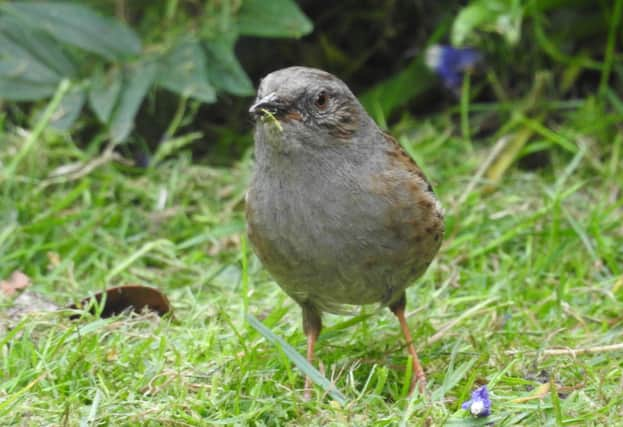On the Wildside: The surprising life of the dunnock


However, there is more to the diminutive dunnock than meets the eye. Highly territorial year-round the birds are solitary except when they pair up during the breeding season. Holding territory and chasing off rival birds means singing almost all year round, with a quiet spell during August and into early September, when almost all birdsong, even that of the dunnock, is hushed. The rattling song is delivered from song-posts to provide elevation as the message rings out across the garden. The nest is a small, compact, neat structure usually in a dense hedge (hence the other common name ‘hedge sparrow’, which is a slight misnomer as they are unrelated to ‘sparrows’). Inside the delicately-lined nest there are generally four or five blue eggs, and the pair will produce up to three broods per year. So, this all seems very straightforward and verging on the mundane.
However, the breeding behaviour of dunnocks is anything but boring, as both males and females will have multiple mates. Indeed, whilst a pair of dunnocks are guarding their territory and have a nest within that, each bird will try and keep a close watch on their mate. Moreover, given half a chance, once out of view even for just a minute or so, both will freely mate with a bird from a neighbouring territory. So, appearances can be deceptive, and the life of the dunnock is not so mundane and boring as you might think!
Advertisement
Hide AdAdvertisement
Hide AdProfessor Ian D. Rotherham, researcher, writer & broadcaster on wildlife & environmental issues, is contactable on [email protected] ; follow Ian’s blog (https://ianswalkonthewildside.wordpress.com/) and Twitter @IanThewildside